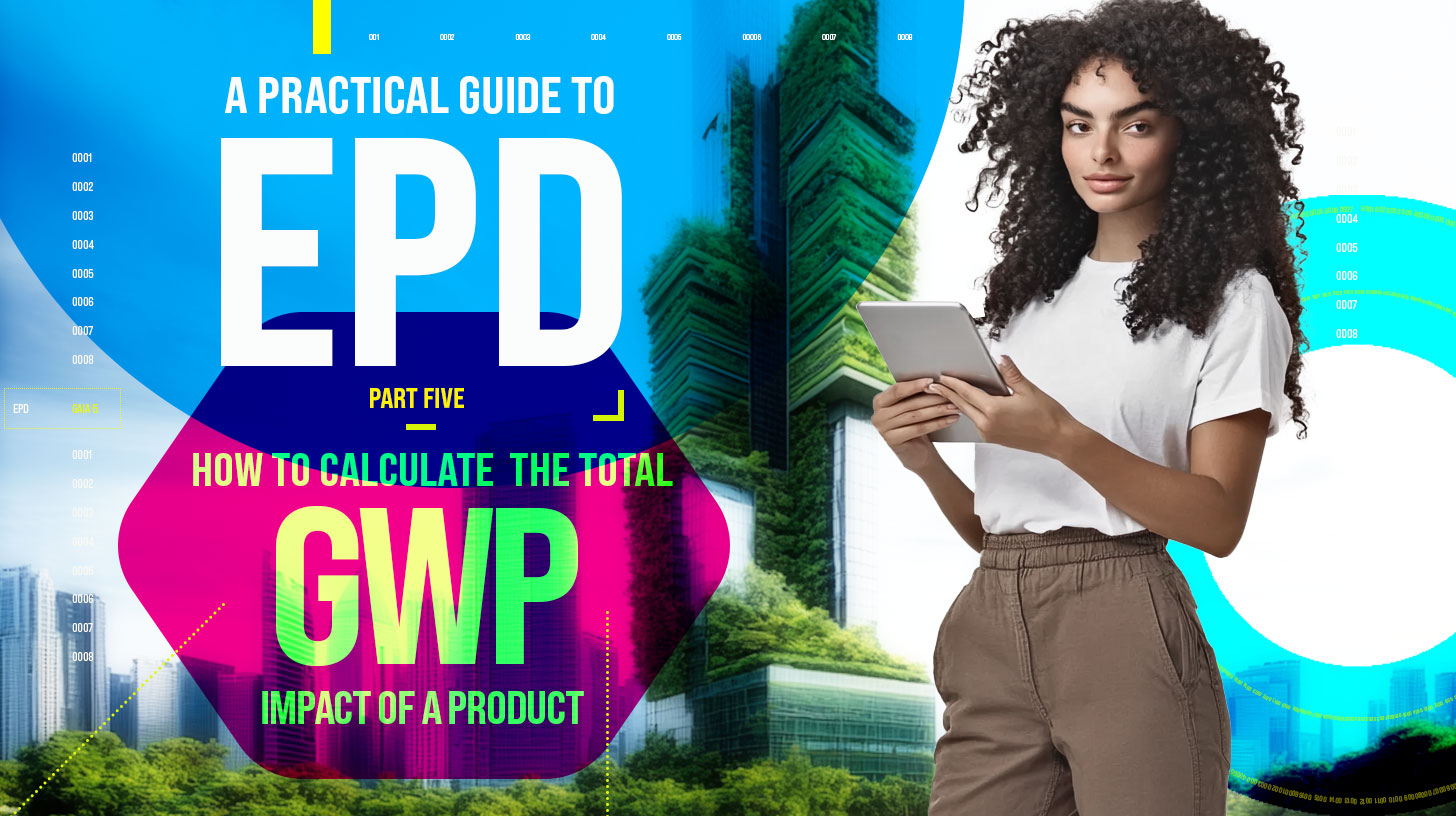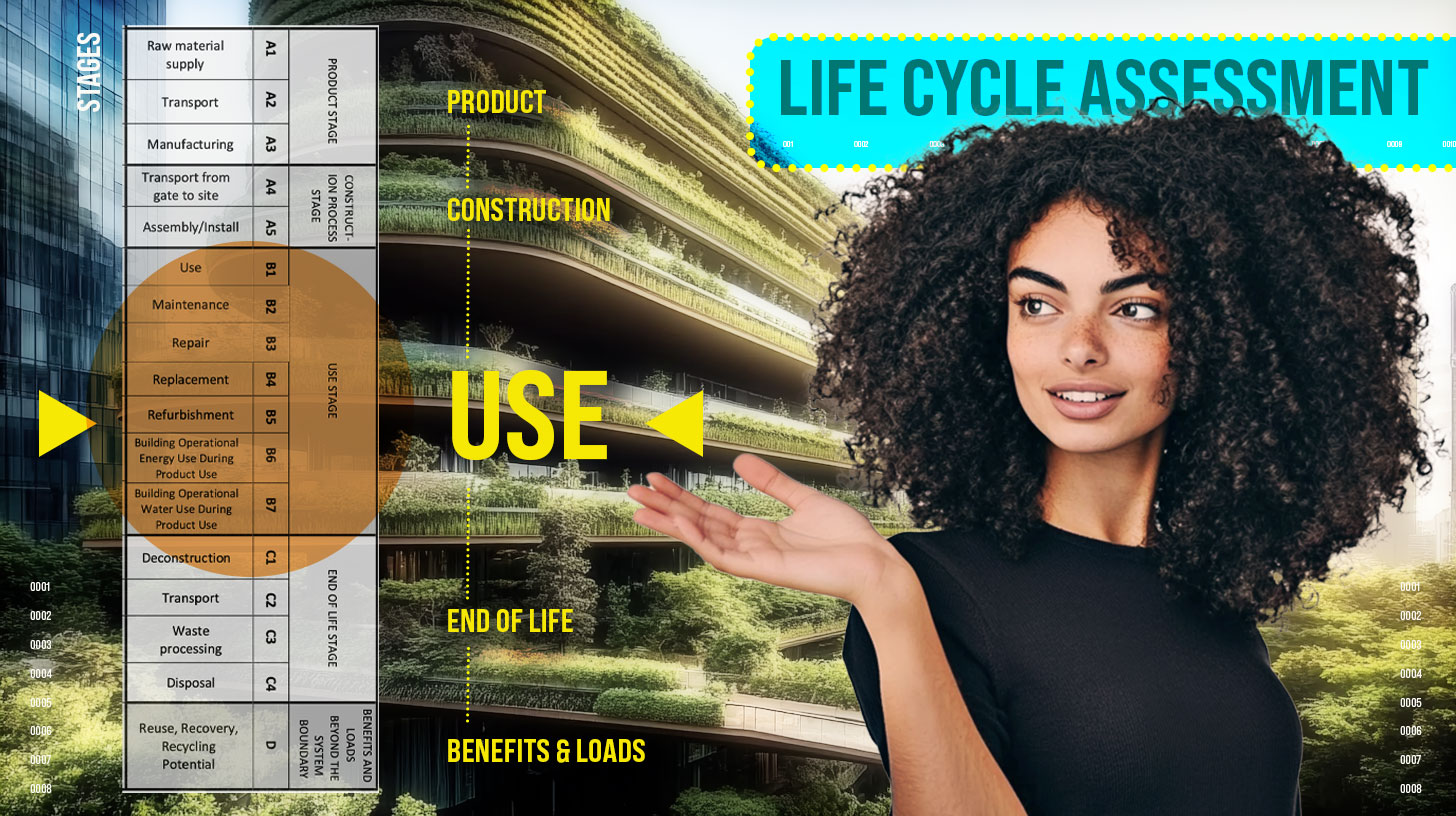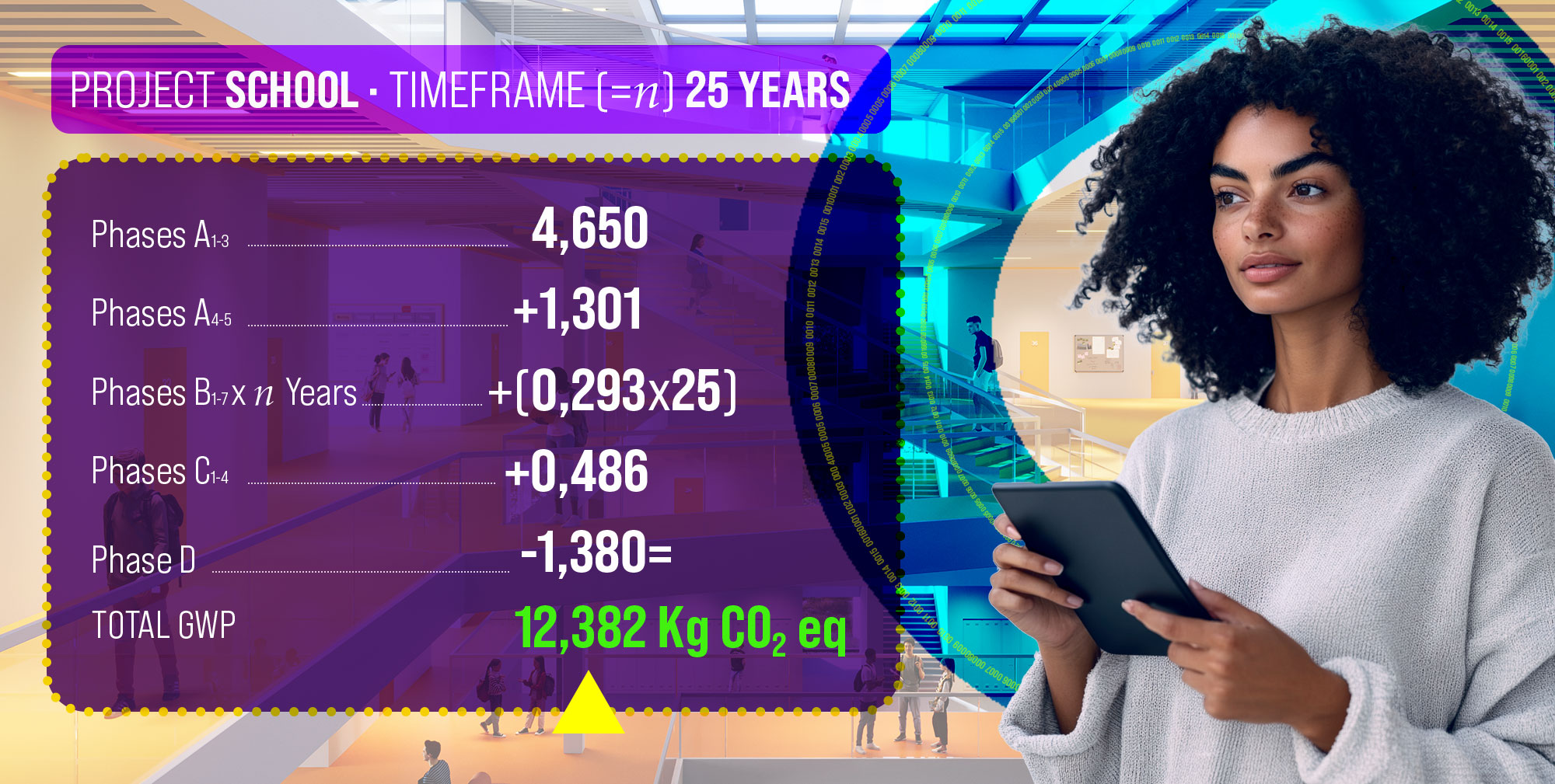
May 15, 2025
A PRACTICAL GUIDE TO EPD
PART FIVE: HOW TO CALCULATE THE TOTAL GWP IMPACT OF A PRODUCT
We have seen in previous articles the importance of an EPD and how it provides us, through a recognized and standardized model based on the life cycle analysis of the product itself, with information of how and how much a company’s products/services impact the environment.
The life (of a flooring) begins beyond the gate
In addition to the CRADLE TO GATE impact that we have already analyzed through the first phases of product life (identified from A1 to A3 in the EPD), the LCA life cycle study obviously continues beyond “the gate” of the company to take into consideration all the subsequent phases:
- transportation to the construction site
- installation
- all those activities related to the use of the floor itself such as maintenance
- to end with the end of life of the floor (demolition and eventual reuse or recycling).
The assumptions behind the life cycle study through the various phases are described in the EPD itself in the appropriate sections.
Overall, we can get an overall view of all the phases in this table that includes them all:

The variable to calculate: useful life
However, in order to calculate the impact of the product during its overall life cycle (i.e. GWP), one should not simply add up the figure for each phase since the entire use phase (B1 to B7) is calculated over only 1 year.
This is due to the fact that the useful life of the floor (nr of years) cannot be the same for all cases and all applications but rather will have to be estimated or decided from time to time as a design parameter and then multiplied by the indicated value of the single year.
Each manufacturer, Artigo included, simply recommends an average life based on its experiences and references, but only the designer can determine the life expectancy of the building he or she is designing based on the input he or she receives from the client.
We find this explanation in the EPD itself in the descriptive part of the use phase (page 11 / paragraph 1.11):
The service lifetime of a floor covering for a certain application on a floor is too widespread to give one common number. For this EPD model the reference service life (RSL) is set to one year, according with EN 16810:2017. This means that all impacts for the use phase are based on the cleaning and maintenance model for one year. Depending on the area of use, the technical lifetime advised by the manufacturer and estimated time on the floor by customer, the service lifetime can be determined. The use phase impacts should be calculated with the foreseen service life to arrive at the total environmental impact. The service lifetime recommended by Artigo is 35 years.
Let’s do the math!
Let’s try a calculation, purely as an example: let’s imagine a School designed to last 25 years before extraordinary maintenance. Let’s take a Uni Gaia floor of 3 mm thickness as an example.

How Phase D contributes to lower GWP
It is worth spending a word on Phase D, which is the one after the product’s end of life.
As you have noticed, it is a negative value in our calculation. This happens when the product collected from the construction site is used as a secondary solid fuel (CSS “end-of-waste” ) as an alternative to traditional fossil fuels ( e.g., in cement plants) or better yet if it is taken back for reuse as a secondary raw material to create new products.
Of course, it is in this second direction that we are moving for the future!
CONTACT US!
"*" indicates required fields